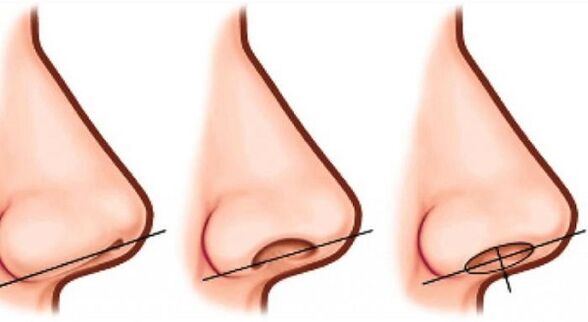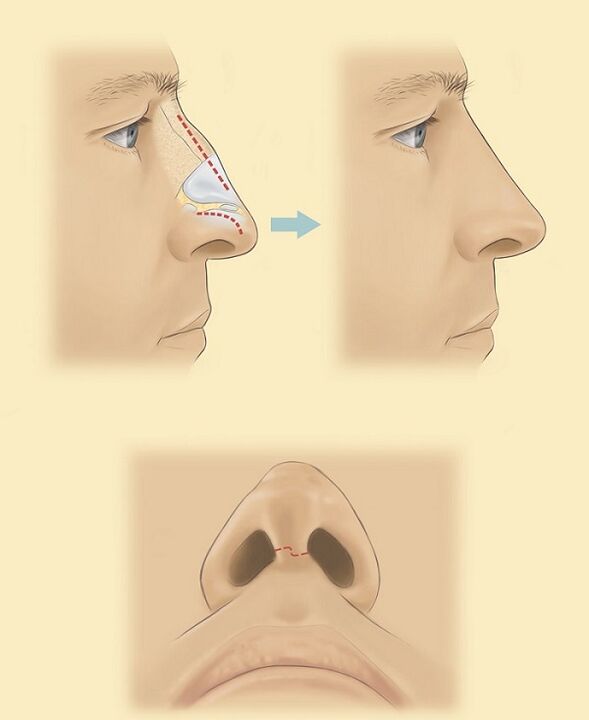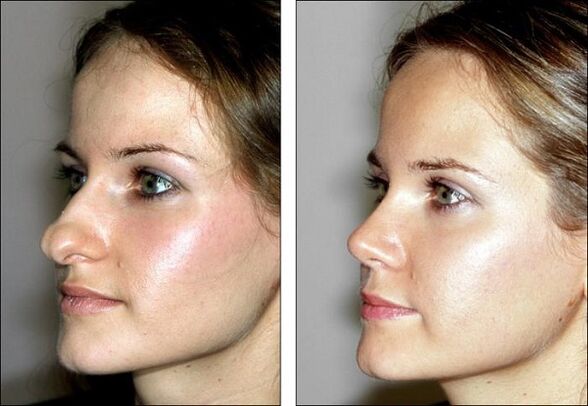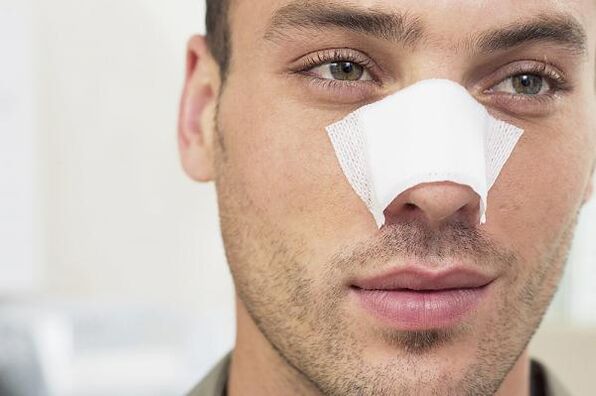More and more people are dissatisfied with their appearance and try to correct some body parts. Sometimes madness arises, but on a larger scale everyone starts to treat this completely indifferently, as the demand for plastic surgery is growing every year. For example, rhinoplasty is an opportunity to correct the shape of your nose, while blepharoplasty corrects the eyelids, and so on.

What is rhinoplasty
Rhinoplasty is an operation that changes the shape and, if desired, the size of the nose. The first correction was performed by a German surgeon named Jacques Josev in the first half of the last century. After this successful experience, this type of surgery began to gain popularity every day, and thanks to the constant development of drugs and equipment, it became easier and safer. The essence of this surgical intervention is to change the skeleton of the nasal cartilage, immediately after removing the skin. Although this procedure is already very popular, there are still a large number of myths that can scare patients.
Myths and facts
The first myth says that this type of surgery can be performed by any plastic surgeon. In fact, doctors of this specialization must be able to possess at least some knowledge, and at most, superficial skills. Unfortunately, this does not mean at all that he has enough practical experience to perform such an operation at the highest level. The procedure is very complicated, and any plastic surgeon should know all the nuances and subtleties of the structure of the nose and respiratory system, because its main task is not only the attraction of the patient, but also the proper function of organs after surgery. In this case, the doctor must observe the aesthetic part of the face.
There is an opinion that nasal rhinoplasty is done mainly for people who have some sort of obsession to remodel their body. But the fact is that the doctor himself can prescribe such a correction if the function of the respiratory organs is disturbed. At the same time, one cannot deny the fact that a beautiful and graceful nose gives more self -confidence (especially for women), which will definitely change life for the better. But to regard this operation as the satisfaction of one’s inner "ego" is completely wrong, as is the modern type of psychotherapy.
Rumors that nasal rhinoplasty is a painful operation are unfounded. Like other surgical interventions, it has some risks, but when compared to similar breast augmentation, the former is less dangerous. As for the pain, the patient will not feel it, as the entire procedure is performed under general anesthesia. After surgery, swelling and slight discomfort persist for 5-7 days, but no more.
Some people think that rhinoplasty is better in the spring or summer, but in fact this is a pure myth, because the procedure can be done at any time of the year.
The best rhinoplasty is performed by a professional doctor, after which there will be no trace of intervention. Whether the operation will be visible or not depends on the degree of curvature at first.
Don’t think that rhinoplasty can completely change the shape of the nose to be perfect. Many are limited by individual features of the structure, skeleton of the skin and bones, which is why patients may not be satisfied with the outcome of the operation. Thus, according to statistics, every tenth patient, once the tissue has healed, returns to the doctor to change its shape.

Pick a new nose
To take into account the abilities of the doctor and the needs of the patient, a computer diagnostic is performed, after which you will be given a photo. Rhinoplasty and, therefore, the surgeon himself cannot go beyond safe intervention if the shape of the nose does not make it possible to obtain the desired result. But the doctor will be able to provide the intervention as close as possible to the ideal.
Based on the aesthetics of the nasal parameters, more attention is paid to the angle of the profile, which is calculated by the line connecting the chin to the forehead as opposed to the back of the nose. For women, rhinoplasty at the tip of the nose is relevant for them, when made slightly high above the plane. Thanks to this correction, the face becomes younger. Do not forget that the shape will be chosen by the surgeon taking into account the parameters of the face as much as possible. The operation must be performed in such a way that the nose is not only in harmony with the rest of the body, but also gives personality to its owner.
Types of rhinoplasty
Rhinoplasty is a surgical intervention, which is represented by several types:
- open intervention;
- surgery without removing the skin (closed);
- use fillers;
- recurrent (secondary);
- columnar surgery;
- changes in the shape of the nostrils;
- wide nose rhinoplasty.
For the first method, for this the doctor makes an incision, right along the bridge between the nostrils, so as to achieve the maximum possible view for the surgeon. In this case, full control throughout the operation is possible. During the closed method, an incision is made from the inside, which makes it less traumatic, such as when correcting the shape of the nose, thanks to the use of fillers. Other types of interventions are determined based on individual anatomy.

Refreshing rhinoplasty
Recently, the most popular type of rhinoplasty is a procedure in which corrections are made, which are designed to affect the increasing age in the dorsum groove of the nose, drooping tip and base. Over time, it becomes bigger and more prominent, which makes the woman look older. Moreover, as age increases, the ear also increases, so the surgeon must consider it while correcting it, until everything is proportionate. Even using a facelift, it is often necessary to fix the nose in relation to a new facial contour. By the way, anti-aging rhinoplasty is the most individual type. The price for this type of correction will also vary in each particular case.
Contraindications
There is a list of specific situations in which the operation is not performed:
- Rhinoplasty is not performed under the age of 18, unless action is required after an injury.
- The inflammatory process of the skin in the nose.
- Serious diseases of internal organs that can cause complications.
- Infectious, oncological and acute viral diseases.
- Diabetes.
- Blood diseases.
Prepare for surgery
High -quality rhinoplasty, first of all, is a complete understanding between doctor and patient. During the first appointment, the surgeon must listen to all requests. Further, based on need, the physician should discuss techniques that may be relevant in a particular case. Thereafter, an assessment is made of various nuances that can directly or indirectly affect the course of the operation. The selection of a particular technique is based only on the following parameters:
- customers' needs;
- nasal osteochondral corset structure;
- skin condition and thickness;
- patient age;
- kind of face.
At the same level, it is necessary to perform computer modeling, the purpose of which is the virtual creation of the shape of the nose using a special program. With regard to the choice of surgical technique, the initiative is entirely transferred to the hands of the surgeon. A thorough history is taken.
The doctor should inform his patient about proper surgical preparation. These include eliminating certain foods from the diet, mandatory smoking cessation and limiting the intake of certain fluids, especially alcohol.
Surgery can be delayed if the patient has recently had an infection of the skin, or an illness related to the upper respiratory tract. About 1-2 weeks before the corrective procedure, it is necessary to completely abandon drugs containing salicylates.
Operation
Currently, there are a number of private and public clinics where rhinoplasty can be performed. Prices at such medical institutions are determined depending on the level of the institution, the equipment, the professionalism of the doctor and, of course, the procedures they offer and perform. Local anesthesia is often used and some sedatives are injected into a vein. Sometimes general anesthesia is needed. At all times, while the operation takes place, the patient is under constant supervision of special computerized equipment, which monitors the work of the heart, pulse, stable pressure.

At the end of all interventions and surgical procedures, the patient was transferred to the ward. Often there may be discomfort, but it all goes away quickly with appropriate medications. In some types of surgery, it is necessary to use special fragments so that the nose is in a stationary state and protected from accidental bruising. If rhinoplasty at the tip of the nose is performed, then a special triangular bandage is used for support, possibly using a fragment of the nostril, which is placed inside. It is possible to leave the clinic in a few hours, but some patients decide to stay overnight.
Running
The operation itself does not last long, about a few hours, it all depends on the chosen method of intervention and the initial complexity.
The first stage involves cutting the anterior chamber of the nasal mucosa. After that, the surgeon is asked to correct the tip of the nose, sometimes having to change the height of the nostrils and the width of the base of the nose. Once the hump or nose is removed, the required appearance is given, the final correction is done using cartilage, and it can be on its own or preserved. During deformity, surgery is performed in parallel with the change in position of the nasal septum.
It should be noted that after all the manipulations were performed, the nose underwent some changes that could not be predicted by the surgeon with 100%accuracy, this can be evidenced by many photos. Rhinoplasty is a very complicated procedure, but there are still a small number of unsuccessful interventions, which are only due to the individual characteristics of the patient.

Possible complications
Any surgical intervention in the body is inappropriate and does not occur without leaving a trace, and rhinoplasty is no exception. Surgeons, of course, must have a high level of qualification, but sometimes there are complications that are exclusively related to individual characteristics. This includes:
- anatomical structure;
- reactions to anesthesia;
- wound healing;
- nose bleed;
- the body's general reaction to surgical operations;
- infection.
The risk of complications can be reduced to zero if you follow all the doctor’s recommendations carefully.

Recovery
In the first few days after rhinoplasty, the nose can cause discomfort. The appearance of swelling around the eyes was also observed, but after 4 days after surgery, there would be no trace of it. After 2 weeks, the nose almost exactly improves its shape eventually, but still, full formation occurs in six months. During this period, care should be taken when treating the skin in the nasal area, as it will be very susceptible to damage. During this period, it is recommended to refuse to visit the sauna and wear glasses for one and a half months.

Return to normal life
If you don’t burden yourself with a lot of physical exercise, then you can start your daily life, or even work, within 1 week after the operation is over. For restarted sports, it is recommended to start it no earlier than after 3-4 weeks. You should also avoid direct sunlight on your face. Actually, any person can perform rhinoplasty, but it is possible to obtain and combine the desired results only by adhering to all the recommendations of the doctor.




















